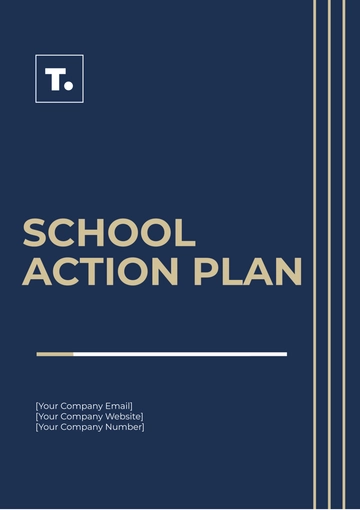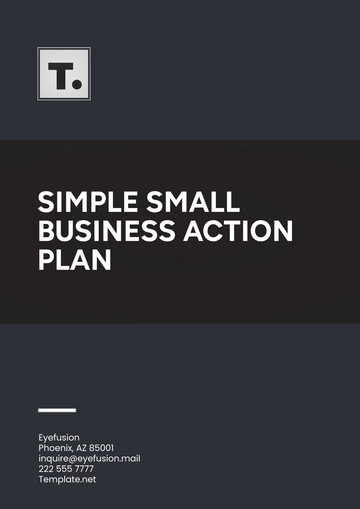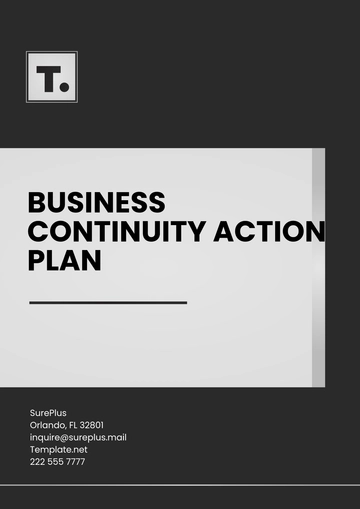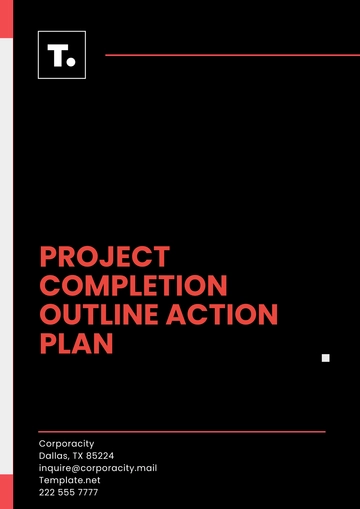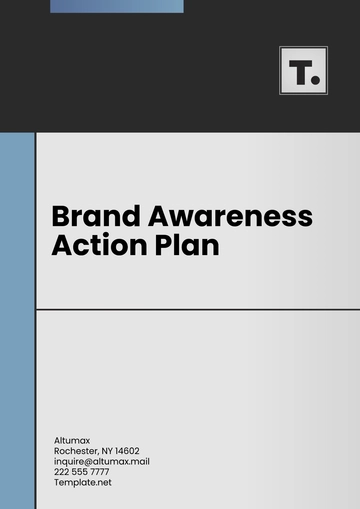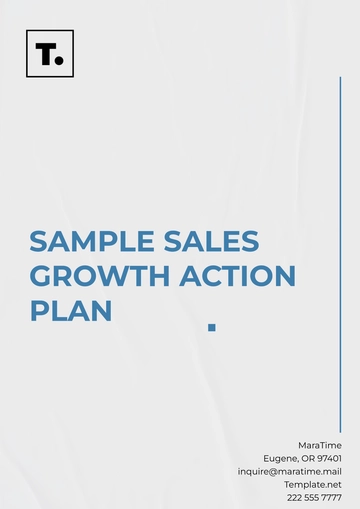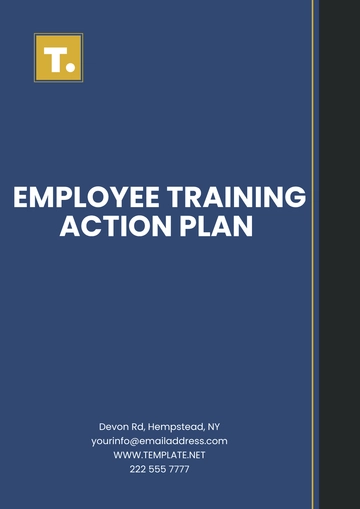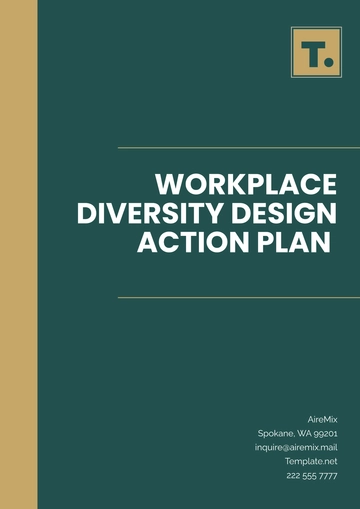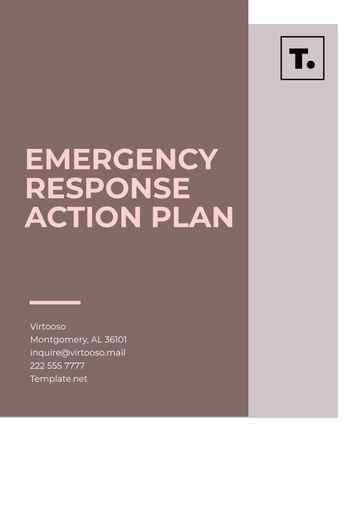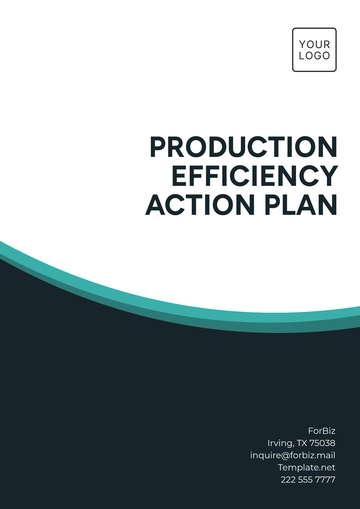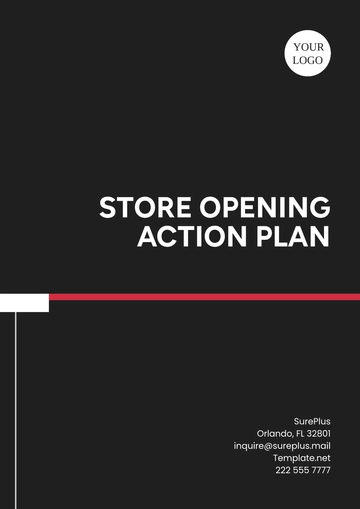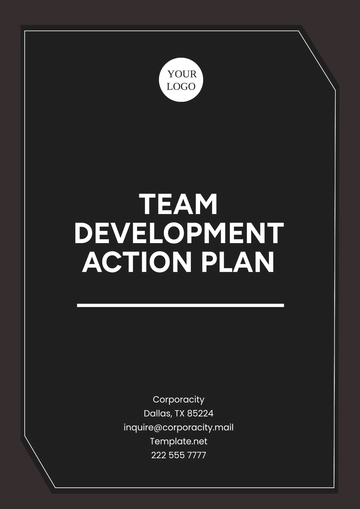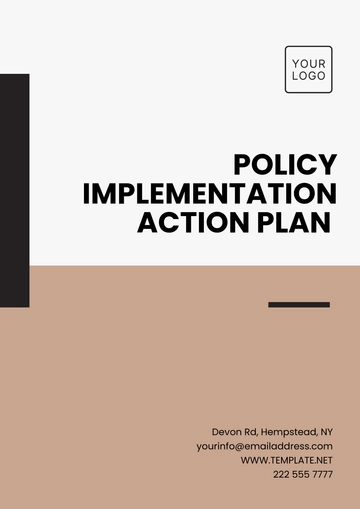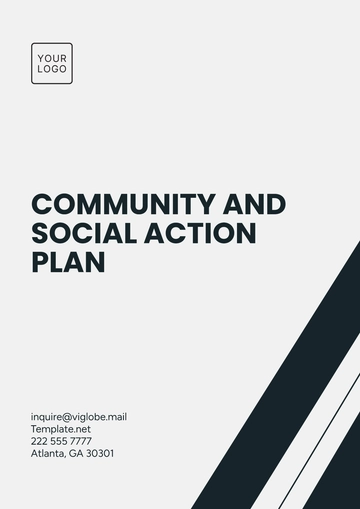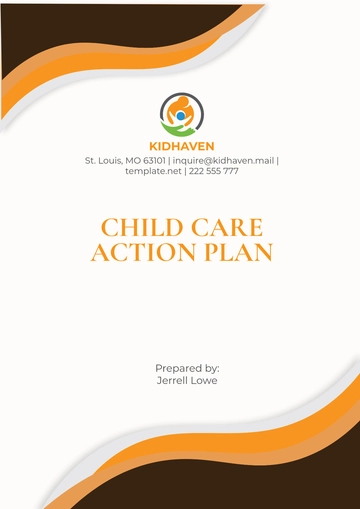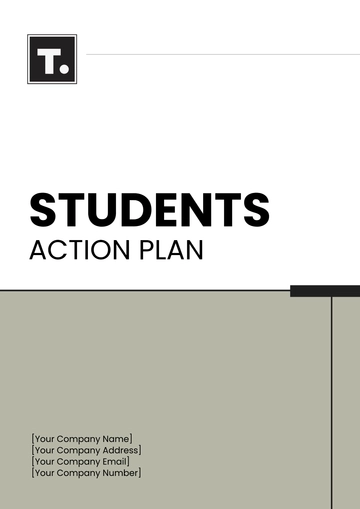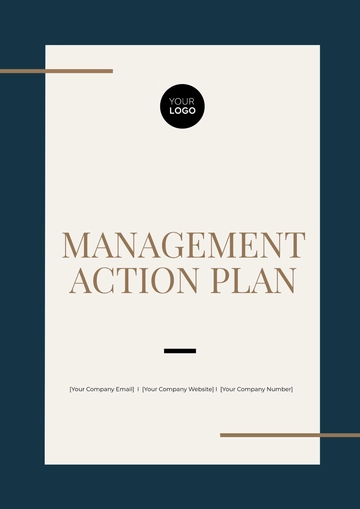Free Restaurant Action Plan
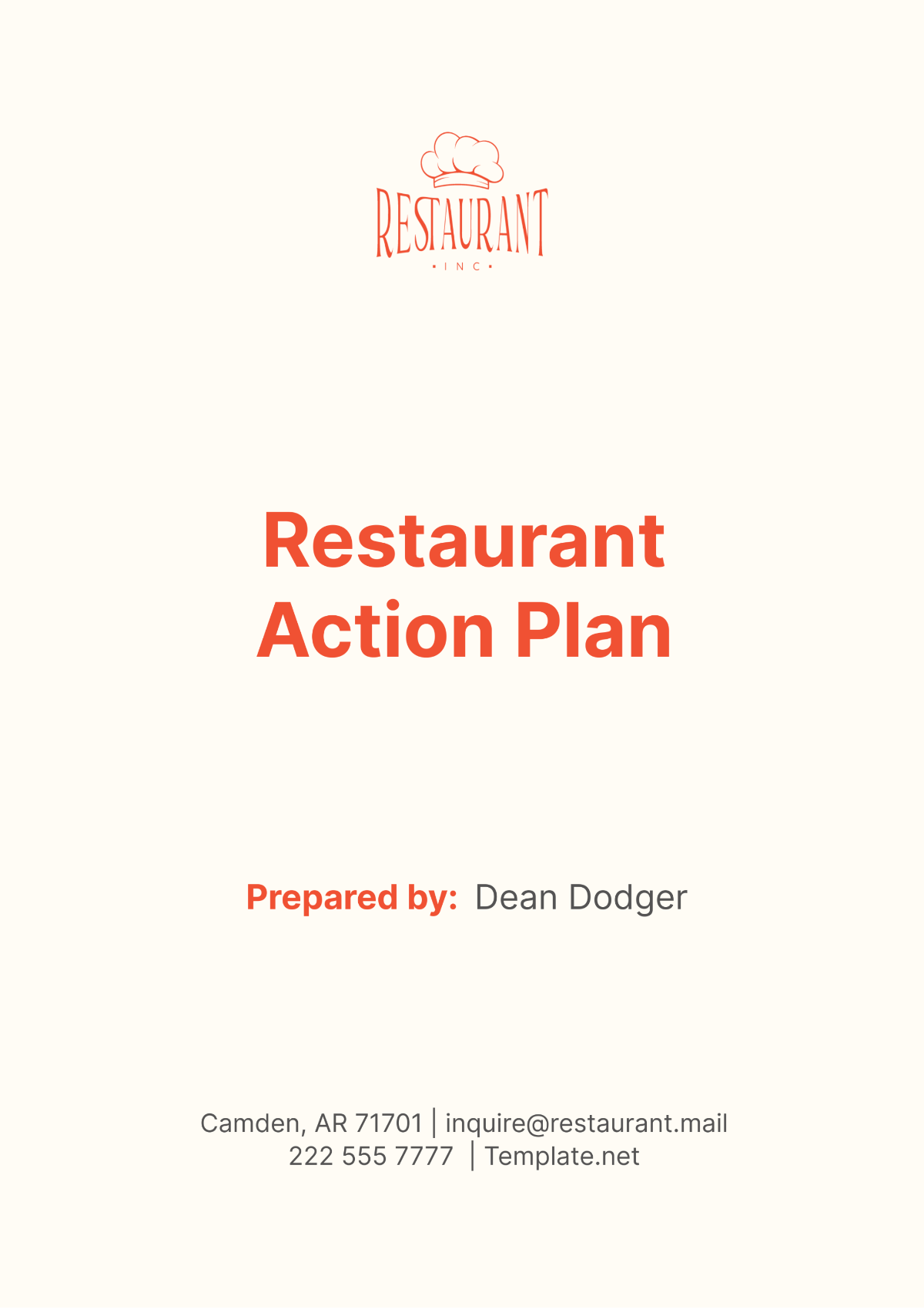
This Action Plan is made under the company, [YOUR COMPANY NAME]. This Action Plan is created by [YOUR NAME]. This comprehensive strategy is aimed at enhancing operational efficiency, improving customer satisfaction, and boosting profitability for [YOUR COMPANY NAME].
I. Executive Summary
[YOUR COMPANY NAME] stands at a pivotal point in its growth trajectory. The competitive landscape of the restaurant industry demands a proactive approach to differentiation and innovation. This action plan outlines a series of strategic measures designed to solidify [YOUR COMPANY NAME]'s market position, refine the dining experience for our customers, and streamline our operational processes. Key initiatives will focus on the integration of cutting-edge technology to improve service delivery and targeted marketing strategies to expand our customer base and increase brand loyalty.
II. Goals and Objectives
To align with [YOUR COMPANY NAME]'s vision for growth and excellence, we have established the following specific, measurable, achievable, relevant, and time-bound (SMART) goals:
Financial Performance:
Increase monthly revenue by 20% within the next 12 months through menu optimization and marketing amplification.
Customer Experience:
Reduce customer wait times by 15% within the next 6 months by implementing a state-of-the-art table management system.
Achieve a customer satisfaction score of 90% over the next year through enhanced service quality and menu innovation.
Operational Efficiency:
Decrease kitchen waste by 10% within 9 months through better inventory management and waste tracking systems.
Market Expansion:
Extend market reach by introducing a catering service and online ordering within the next 18 months.
III. Situation Analysis
Market Overview
The dining market has seen fluctuating trends, particularly with shifts towards fast-casual dining and an increased focus on sustainability and health-conscious eating. Leveraging these trends is crucial for staying competitive.
Competitor Analysis Table
Competitor | Market Share (%) | Strengths | Key Offerings | Marketing Strategies |
|---|---|---|---|---|
[Competitor 1] | 25 | Extensive menu variety | International cuisines, Vegan options | Social media campaigns, Loyalty programs |
[Competitor 2] | 20 | Strong online presence | Fast-casual dining, Seasonal specials | Influencer partnerships, Online ordering promotions |
[Competitor 3] | 15 | Innovative marketing | Gourmet dishes, Signature cocktails | Event sponsorships, Community engagement initiatives |
Analysis Overview
[Competitor 1] has captured a significant portion of the market through a diverse menu that caters to various dietary preferences and ethnic tastes. Their robust loyalty programs and active social media presence help in retaining customers and enhancing brand visibility.
[Competitor 2] leverages its strong online presence to attract a tech-savory demographic, with an emphasis on convenience and trend-based seasonal offerings. Their marketing strategy focuses on digital engagement and promoting ease of access through advanced online ordering systems.
[Competitor 3] differentiates itself with a focus on high-quality, unique food and drink offerings that are marketed through local events and community involvement. Their innovative marketing strategies are designed to create a strong local footprint and brand loyalty.
Customer Feedback
Feedback from customer surveys indicates a demand for quicker service and more varied menu options. This insight has driven the focus areas of our action plan.
Internal Process Evaluation
Our review of internal processes has highlighted inefficiencies in table management and order fulfillment, which extend customer wait times and impact satisfaction.
IV. Strategy Development
To address the opportunities and challenges identified, we will undertake the following strategic initiatives:
Technology Integration
New Table Management System:
Objective: Reduce customer wait times and improve table turnover.
Action Steps:
Select and implement a cloud-based table management system.
Train staff on the new system to ensure a seamless transition.
Expected Outcome: 15% reduction in customer wait times.
Menu Innovation
Menu Revamp:
Objective: Align the menu with emerging food trends and customer preferences.
Action Steps:
Conduct a comprehensive review of current menu offerings.
Develop new dishes focusing on organic and locally sourced ingredients.
Expected Outcome: Increase in customer visits and satisfaction by offering trendy, health-conscious options.
Marketing Enhancement
Social Media Marketing Campaign:
Objective: Increase visibility and attract a younger demographic.
Action Steps:
Develop a three-month rolling content calendar for all major social platforms.
Launch targeted ads focusing on special offers and new menu items.
Expected Outcome: 20% growth in social media following and increased engagement rates.
Operational Optimization
Waste Reduction Program:
Objective: Decrease kitchen waste and improve cost efficiency.
Action Steps:
Implement an inventory management system that tracks and analyzes food usage and waste.
Conduct regular training sessions for staff on best practices in waste reduction.
Expected Outcome: Reduction in costs related to wasted materials and improved sustainability practices.
The strategic development of these areas will be supported by detailed action items, responsible personnel, and specific deadlines, ensuring a comprehensive and accountable implementation phase.
Supporting Data Table
Key Area | Current Value | Target Value | Expected Impact |
|---|---|---|---|
Monthly Revenue | $100,000 | $120,000 | +20% increase |
Customer Wait Time | 30 min | 25.5 min | 15% decrease |
Customer Satisfaction | 82% | 90% | +8% increase |
Social Media Following | 5,000 | 6,000 | 20% growth |
IV. Strategy Development
Our strategic approach includes the following key initiatives:
Implementation of a new table management system to enhance customer flow and reduce wait times.
Revamping the menu to align with current food trends and customer preferences.
Launching targeted social media marketing campaigns to increase brand visibility and attract a younger demographic.
V. Action Items
To translate our strategies into tangible results, specific actions have been outlined below. These action items are allocated to responsible personnel along with set deadlines to ensure timely completion and accountability.
Detailed Action Items Table
Action Item | Responsible Person | Deadline | Expected Outcome |
|---|---|---|---|
Implement new table management software | Operations Manager | [Date] | Enhance customer flow and reduce wait times by 15%. |
Conduct menu review and redesign | Head Chef | [Date] | Align menu with latest food trends and customer feedback. |
Develop social media marketing plan | Marketing Coordinator | [Date] | Increase brand visibility and engagement by 20%. |
Train staff on customer service excellence | HR Manager | [Date] | Improve customer service scores to 90%. |
Set up online ordering system | IT Manager | [Date] | Expand market reach and increase monthly revenue by 20%. |
VI. Monitoring and Evaluation
To assess the effectiveness of the implemented strategies, the following key performance indicators (KPIs) have been established, along with regular review intervals.
KPI Monitoring Table
KPI | Monitoring Technique | Frequency |
|---|---|---|
Monthly Revenue Growth | Financial Reports | Monthly |
Customer Wait Times | System Logs from Table Management Software | Bi-weekly |
Customer Satisfaction | Digital Surveys Post-Dining | Monthly |
Social Media Engagement | Social Media Analytics Tools | Quarterly |
Online Orders | Sales Tracking System | Monthly |
Regular review meetings will be held to evaluate these KPIs, allowing for timely adjustments to strategies based on real-time data. This proactive monitoring approach will help in identifying areas that require additional focus and resources.
VII. Budget
The budget for this action plan is crafted to allocate resources effectively across different initiatives to ensure optimal implementation and results. Below is the breakdown of the budget for each strategic area.
Budget Allocation Table
Description | Quantity | Unit Cost ($) | Total Cost ($) |
|---|---|---|---|
Table management software | 1 | 5,000 | 5,000 |
Menu redesign | 1 | 2,500 | 2,500 |
Social media marketing campaigns | 3 | 1,500 | 4,500 |
Staff training programs | 4 | 750 | 3,000 |
Setup of an online ordering system | 1 | 4,000 | 4,000 |
Total | 19,000 |
This budget reflects the commitment to achieving the set goals through substantial investment in technology, marketing, and quality improvements.
VIII. Risk Management
Risk management is crucial to safeguarding the project against potential challenges. The following table outlines major risks and their corresponding mitigation strategies.
Risk Management Table
Risk | Probability | Impact | Mitigation Strategy |
|---|---|---|---|
Supply Chain Disruptions | Medium | High | Establish alternative suppliers and stockpile essential ingredients. |
Changes in Consumer Preferences | High | Medium | Continuously gather customer feedback and adjust offerings accordingly. |
Technological Failures | Low | High | Regular system maintenance and having backup systems in place. |
These strategies are designed to address potential obstacles proactively, ensuring the stability and continuity of restaurant operations.
IX. Appendices
Appendix List
Market Analysis Report: Detailed insights into current market trends and consumer behavior.
Competitor SWOT Analysis: Strengths, Weaknesses, Opportunities, and Threats of key competitors.
Customer Feedback Summaries: Compilation of recent customer surveys and feedback.
Financial Projections: Month-by-month revenue forecasts based on the new strategies.
Training Materials: Resources and manuals for staff training programs.
This appendix provides supportive documentation that aids in the comprehensive understanding of the action plan's foundation and projected outcomes.
Conclusion
This Restaurant Action Plan for [YOUR COMPANY NAME] provides a clear, actionable path towards enhanced operational efficiency, improved customer satisfaction, and sustained profitability. By meticulously following the outlined steps, monitoring progress against KPIs, and adapting to feedback and market changes, [YOUR COMPANY NAME] is poised for success in a competitive landscape. For further details, updates, or inquiries, please feel free to contact [YOUR NAME] at [YOUR COMPANY EMAIL].
- 100% Customizable, free editor
- Access 1 Million+ Templates, photo’s & graphics
- Download or share as a template
- Click and replace photos, graphics, text, backgrounds
- Resize, crop, AI write & more
- Access advanced editor
Empower your restaurant's success with Template.net's Restaurant Action Plan Template. Tailored for restaurateurs seeking strategic growth, this template offers editable sections to map out your action steps effectively. Utilize our AI editor tool for seamless customization, ensuring alignment with your goals and objectives. Drive progress, maximize efficiency, and achieve culinary excellence with precision and clarity.

